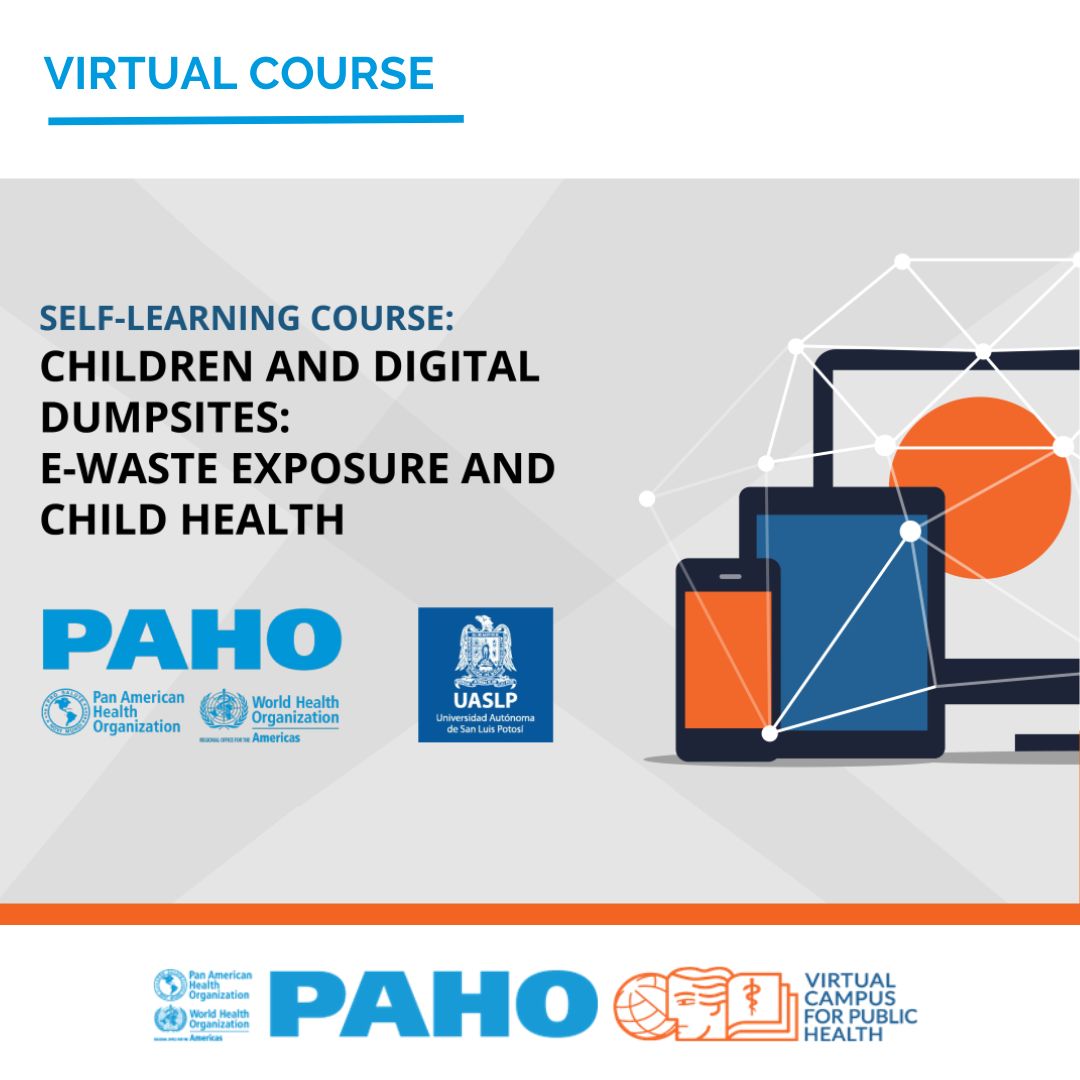Children and digital dumpsites: e-waste exposure and child health

Introduction
In various contexts, e-waste is recycled with informal technologies that cause contamination by toxic elements present in electrical and electronic equipment or by the toxins generated by its precarious processing. Therefore, there is a risk of occupational and environmental exposure both for workers and for children (many of them daughters and sons of workers) who have contact with electronic devices or e-waste, during their collection, storage, handling and recycling. Due to exposure to toxins, adverse health conditions can be generated.
Considering the increase in the production of these electrical and electronic devices and considering the high percentage of informal recycling, the contamination associated with the mismanagement of e-waste should be taken as a public health priority, above all, due to the risk of exposure for children and girls in their various stages of development. Consequently, the inappropriate handling of electronic devices during their recycling must be dealt with in a multidisciplinary perspective, covering various sectors of society.
Course Purpose
Provide minimum contents, to address the toxicological risks associated with the precarious management of e-waste (WEEE) as a public health problem. Thus, the course proposes the knowledge integration in various areas and presents instruments that allow the identification of health problems arising from accumulated risk, in places where electrical and electronic devices are recycled with deficient technologies. In addition, the course establishes guidelines for the coordination of multidisciplinary technical teams. These guidelines are useful in the design of contextualized schemes aimed at reducing the identified risks. Above all, for the risks that affect the most vulnerable population groups, among which children stand out.
Course Objectives
Acquire a comprehensive vision of the methodology for the evaluation of health risks, with emphasis on the risk for children, and its application in sites contaminated by the precarious management of e-waste.
Leaning Objectives
The program states that the participant will be able to identify health risks, especially for children due to the presence of chemical, physical, biological and/or social threats, derived from labor informality in the management of e-waste.
The student will understand the importance of WEEE as a public health problem and will be trained to seek technical and scientific information to keep up-to-date in their daily practice, and will be introduced to ethical principles to face complex problems.
Duration
The course is open and available on the Virtual Campus for Public Health (VCPH). Because it is a self-study course, participants can regulate their times and moments of dedication. The estimated time to complete all the modules and the final evaluation is 20 hours.
Target Audience
In principle, the course is proposed for health and environmental professionals, as well as for undergraduate and graduate students in these areas. However, since the course is designed in an accessible academic language, it can be taken by professionals from other areas interested in the subject, such as decision makers in public policies for WEEE, social and economic entrepreneurs in the recycling industry, and community leaders in areas affected by WEEE.
Structure
Module 1: Introduction: General aspects of WEEE.
Module 2: Differentiate the exposure pathways involved in the informal recycling of e-waste.
Module 3: Estimation and evaluation of health risk.
Module 4: Risks to children, women of childbearing age, and informal workers.
Module 5: Risk communication and its management.
Module 6: The need to create multidisciplinary and multisectoral groups.
Module 7: Introduction to the “Rapid Methodology” strategy and its structure.
